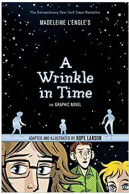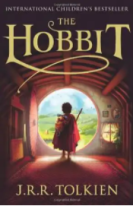福建省龙岩市2021-2022学年高二上学期期末考试英语试题
福建
高二
期末
2022-01-21
98次
整体难度:
容易
考查范围:
主题、语篇范围
一、阅读理解 添加题型下试题
The Harry Potter series is filled with magic and adventure. The novels are about a young boy who attends an academy for young wizards. Here are a few more books you may enjoy if you like the Harry Potter books.
A Wrinkle in Time
This is a fantasy novel by Madeleine L' Engle. The book is a mix of science fiction and fantasy, and the first in a series about Meg Murry and her extraordinary family. The novel explores individuality, the importance of language, and the pursuit for love across time and space.

The Enchanted Castle
This is a novel by Edith Nesbit published in 1907.In this book,three children—Jerry,Jimmy,and Kathleen—find a magical castle with an invisible princess. Nesbit explores themes of illusion(幻想)against reality,with a magic ring. a fake princess,and the Ugly Wuglies—who come alive. The Enchanted Castle is a classic full of magical mysteries.

The Hobbit
This is a novel by J. RR. Tolkien where you get a chance to meet Bilbo Baggins and follow him on his adventures in Middle-earth. He is a hobbit, comfortably staying at home in his hole until Gandalf calls him away to a great adventure. In his dangerous trip he encounters monsters and he discovers a great deal about himself. The hobbit undergoes great changes after seeing so much of the world and experiencing the dangers of Middle-earth.

1. What do we know about A Wrinkle in Time?
| A.It is Madeleine L' Engle's first work. |
| B.It praises Gandalf's spirit of adventure. |
| C.It is about personality, language and love. |
| D.It introduces a magical castle found by three children. |
| A.A detective story. | B.A fantasy novel. | C.A love story. | D.A biography. |
| A.Harry Potter | B.A Wrinkle in Time | C.The Enchanted Castle | D.The Hobbit. |
When Roy Austin went on his first wildlife trip back in 2018, his only goal for the leisurely vacation was to catch sight of some African wildlife in its natural habitat—but he ended up finding something much more meaningful. He was most captivated (迷住) by the people he met in rural Kenya—particularly at the Amboseli Primary and Secondary School in Amboseli National Park.
In addition to befriending many of the students and teachers, Austin was surprised to learn how difficult it was to get books and school supplies for the children. “In rural Kenya, the government does not build school buildings. You either build it yourself or raise money to have it built,” says Austin. “A teacher was asked if they had a library. She replied, ‘ No, but we would love to have a library.’ That stuck in my mind.”
When Austin eventually returned to his home in Bluffton, South Carolina, he launched Libraries for Kids International. Since starting the charity, Austin has managed to ship more than 1000 books to 11 schools across Kenya and Tanzania. He sends the books through the post office rather than FedEx to keep the shipping costs down.
As it continues to collect books and donations for additional shipments, Austin says that the charity is now helping to move a shipping container of 22, 000 books from Atlanta to Kenya. In the future, the philanthropist (慈善家) hopes to start sending donations to South America as well.
“Many people told me that it can’t be done. It’s too expensive to ship books, and they will disappear going through customs,” Austin says. “However, every worthwhile project will have problems and barriers. If you focus on the problems, you will never start. On the contrary, if you focus on the aim and solve the problems as they arise, most anything is possible.”
4. What problem does Austin find in rural Kenya?| A.Education depends on charity. |
| B.Students lack education resources. |
| C.Books get lost going through customs. |
| D.Families can’t afford the kids’ schooling. |
| A.He teaches at school. | B.He funds a library for them. |
| C.He reduces the shipping costs. | D.He ships books to schools. |
| A.It is the first step that costs. |
| B.Success belongs to the persevering. |
| C.Every bit of effort makes a big difference. |
| D.Nothing is difficult to a determined mind. |
| A.A crazy adventurer. | B.A devoted educator. |
| C.A charity enthusiast. | D.A passionate volunteer. |
Researchers at the University of Pennsylvania are working to create a special chewing gum that could help reduce the spread of COVID-19 by "trapping" the virus so a person can't transmit it to someone else.
Experts agree that vaccinations are the best way to fight against the COVID-19 pandemic, but its also known that vaccinated people can still transmit the virus. The University of Pennsylvania researchers are hoping that their chewing gum will give people a low-cost way to further prevent COVID-19 from spreading.
"This gum offers an opportunity to break down the virus in the saliva (唾液), giving us a simple way to possibly cut down on a source of disease transmission,"said Henry Daniell, a professor at the University of Pennsylvania School of Dental Medicine and leader of the research.
The gum contains plant-grown ACE2 proteins, which showed in laboratory studies to break down the SARS-CoV-2 virus. When researchers exposed saliva samples from COVID-19 patients to the chewing gum, they found the levels of viral RNA were sharply reduced to the point that the virus was almost undetectable.
The research is still in its early stages, and the researchers are working on getting permission to conduct a clinical trial in humans to determine if the gum is safe and effective. Should the gum work, Penn Today reported it could be used in situations where people need to be close to each other-such as a dental cleaning, for example-to reduce the risk of passing the virus to others.
Before researchers can bring their chewing gum to market, they have to determine how much of it should be used per day, which will be based on how long it takes the virus to reproduce. However, if it does prove to be an effective tool at fighting coronavirus, Daniell told "hundreds of millions of chewing gum" could be produced within three months.
8. What does the text mainly talk about?| A.Saliva has effect on virus. | B.Producing chewing gums costs little. |
| C.A research about preventing Covid-19. | D.A product to stop the spread of Covid-19. |
| A.It produces ACE2 proteins. | B.It cures the disease of COVID-19. |
| C.It destroys the virus in the saliva. | D.It detects the SARS-CoV-2 virus. |
| A.The gum will see is bright future. | B.The gum can be massively produced. |
| C.The gum will enter the market soon. | D.People's health determines the use of the gum. |
| A.Hopeful. | B.Negative. | C.Doubtful. | D.Unclear. |
Feeling overwhelmed by your to-do list can certainly make you unhappy, but new research suggests that more free time might not be the magic elixir many of us dream it could be.
In a new study released last week, researchers analyzed data from two large-scale surveys about how Americans spend their time. Together the surveys included more than 35,000 respondents. The researchers found that people with more free time generally had higher levels of subjective well-being — but only up to a point.
People who had up to two hours of free time a day generally reported they felt better than those who'd had less time. But people who had five or more hours of free time a day generally said they felt worse. So ultimately the free time "sweet spot" might be two to three hours per day.
Most people know that being too busy can cause stress. However, no evidence shows more free time will actually bring people happiness. For example, some adults struggle with the "retirement blues, "which can be due to lacking stimulation(刺激)and structure.
Part of finding the "sweet spot" has to do with how people spend the extra time they have, the researchers behind the new study argue.
They conducted several smaller online experiments. In one they asked participants to imagine having 3.5 to seven free hours per day. They were asked to imagine spending that time doing "productive" things (like exercising) or to imagine doing "unproductive" activities (like watching TV) Study participants believed their well-being would suffer if they had a lot of free time during the day—but only if they used it unproductively.
Of course, what feels "productive" is up to you. If watching two hours of "Real Housewives" in your free time increases your happiness, you should do that. Even some traditionally productive or purposeful activities like walking, knitting, reading or cooking, which helps burn stress and put people in a state of flow, can be easy and beneficial.
12. What does the underlined word "elixir" mean in Paragraph 1?| A.Solution. | B.Achievement. | C.Purpose. | D.Outcome. |
| A.To show the "sweet spot" helpful. | B.To prove more free time might harm. |
| C.To confirm the retired lack stimulation. | D.To suggest the old keeping exercising. |
| A.How to spend free time matters. | B.Watching TV is unproductive. |
| C.Being active lessens anxiety. | D.Reading is a purposeful activity. |
| A.What will you do in free time? | B.What's the free time "sweet spot"? |
| C.How much free time makes you happier? | D.What's better, productive or unproductive? |



